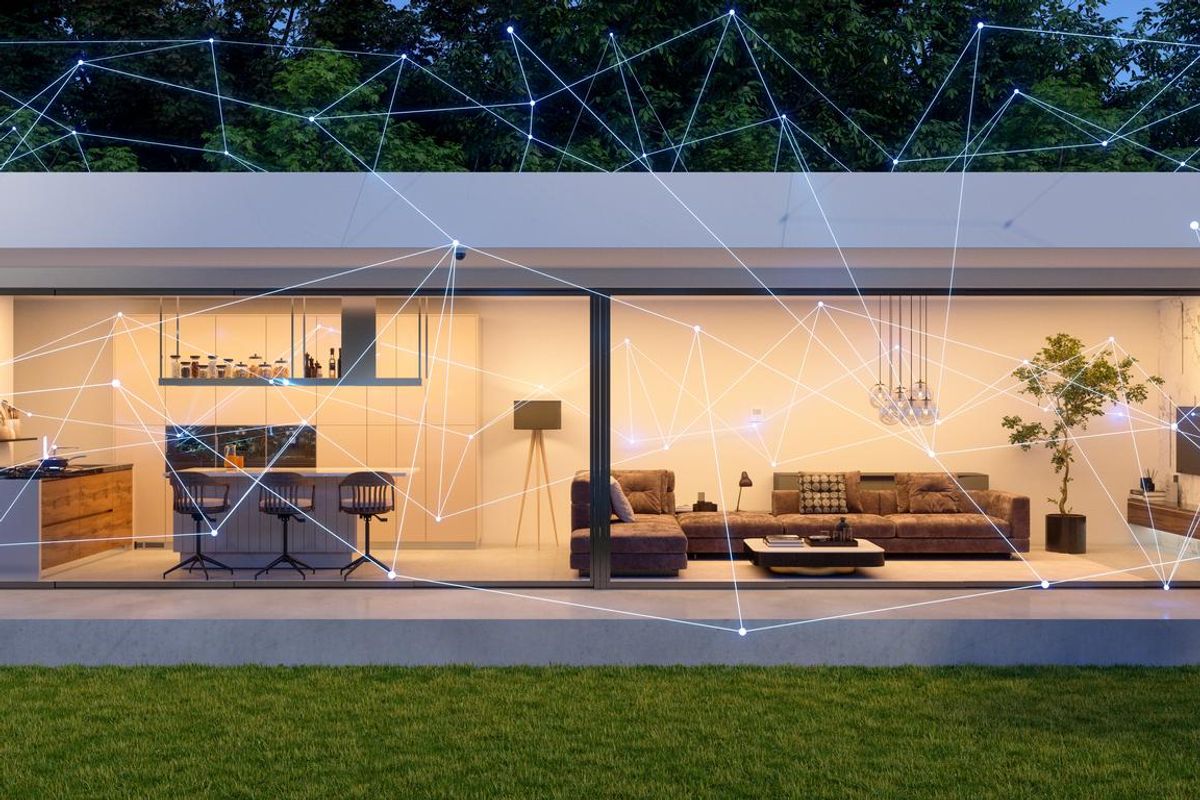
GearBrain
Smart Home Design: 5 Tips to Use Domotics in Architecture
Here are five considerations for architects to incorporate into their plans when designing smart homes.

Here are five considerations for architects to incorporate into their plans when designing smart homes.
Integrating home automation (often referred to as domotics) into architectural design is a forward-thinking approach that can transform a traditional home into a modern, connected, and efficient living space. These homes are called smart homes because they automatically control certain aspects of daily home operations using hands-free technology powered by the Internet of Things (IoT).
Smart homes are fast gaining popularity due to advancements in digital technology and their ability to enhance comfort, security, and energy efficiency. However, designing a smart home requires much forethought and planning to ensure a harmonious blend of technology and aesthetics.
Here are 5 tips or considerations for architects (pro or aspiring) who want to incorporate domotics in smart home designs:
A clear and well-defined vision is the foundation of any successful smart home design. Having a comprehensive idea of expectations and needs will guide the architectural design process and ensure the resulting home is tailored to the occupants' lifestyles and preferences.
Before diving into architectural plans, it's crucial to establish the home automation system's objectives and purpose. You can identify the purpose and goals by asking questions such as the following:
To successfully integrate domotics into the architectural plans for a smart home, the architect must ensure a robust infrastructure is designed or in place. Consider the following infrastructure elements:
Wiring
Ensure the home is equipped with the necessary wiring to support current requirements and potential future automation technologies. For instance, installing high-quality, future-proof cabling such as CAT6 or higher ethernet cables will allow for seamless connectivity. Remember to include the appropriate conduits for power and data.
Electrical
It's an excellent idea to allocate dedicated circuits for automation components, such as smart lighting, motorized blinds, and audio-visual equipment. Doing this helps to prevent overloading the circuits and ensures system reliability.
Centralized Control
When designing the smart home, designate a centralized location within the home for housing control panels, servers, and hubs. This central hub (control center) will serve as the automation system's nerve center, facilitating easy access, maintenance, and troubleshooting.
Introducing Echo Hub | 8” smart home control panel with Alexa | Compatible with over 140,000 devices

Having a smart home is one thing. Ensuring the technology seamlessly integrates with the home's aesthetics is another challenge. With this in mind, it helps to consider the following design considerations:
Excellent security is paramount in any smart home design for a number of reasons, especially in luxury properties in high-profile areas. It's therefore essential the integration of domotics or automation technology enhances security rather than compromises it. Below are some architectural considerations that can enhance a smart home's security:
As you can imagine, including domotics in a home can significantly increase energy consumption. However, architects can reduce electricity consumption through design and optimal control of lighting, heating, cooling, and other systems. Here are some ideas that architects may include in their plan that must accommodate domotics:
The popularity of smart homes is on the rise, and it’s even impacting property demand, resale value, and rental rates. However, incorporating domotics into architectural design requires a thoughtful and strategic approach, and it's helpful to have a clear vision that will dictate the infrastructure choice before designing. Considerations include seamless integration, prioritizing security, and considering energy efficiency.
With this information, architects are better equipped to design smart homes that meet modern living standards and enhance comfort, security, and sustainability.
Successfully integrating home automation into architectural plans can result in a harmonious blend of aesthetics and functionality, transforming traditional homes into cutting-edge and connected living spaces.
And if you need help finding smart devices or systems that work seamlessly together, check out The GearBrain, our smart home compatibility find engine. It will help you find, buy, and connect any smart device or system. It can also help you find other compatible products that work with your existing smart devices or home security system, as well as Google Assistant and Amazon Alexa-enabled devices.
The GearBrain, First Compatibility Find Engine for Smart DevicesGearBrain's mission is to simplify the Internet of Things or new connected devices for consumers. Many of today's new connected ...

GearBrain Compatibility Find Engine
A pioneering recommendation platform where you can research,
discover, buy, and learn how to connect and optimize smart devices.
Join our community! Ask and answer questions about smart devices and save yours in My Gear.
